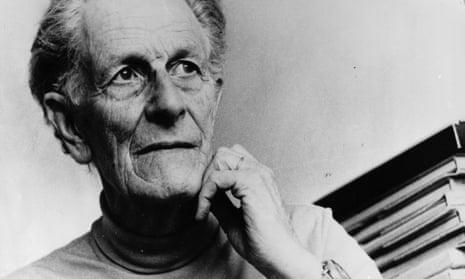Composed as a dance and mime show at the height of the second world war, and never published during the composer’s lifetime, Frank Martin’s Totentanz is based on a series of 15th-century murals that once adorned the walls of a Dominican monastery in Basel. In the paintings, Death is seen as a benign figure, a gentle mediator between the worlds of the living and the dead, and the eight scenes in Martin’s work depict his encounters with ordinary people who may or not be about to die, but are guided to the afterlife if they are. A solo dancer takes the role of Death, with mimes playing the characters he meets. The musical forces include a boys’ choir, a group of baritones, wind band, string orchestra and solo piano, as well as three Basel drums, a type of military drum.
The score partly comes from Martin’s earlier works and makes prominent use of a 16th-century soldier’s hymn. Brittle marches and uptempo chorales are interspersed with choral numbers; there are echoes of Stravinsky (The Soldier’s Tale) and Kurt Weill, even Gershwin. It’s a curiosity, really, but the music’s pervasive melancholy is oddly touching in this first-ever recording, which seems to have been prepared meticulously by Bastiaan Blomhert .

Comments (…)
Sign in or create your Guardian account to join the discussion